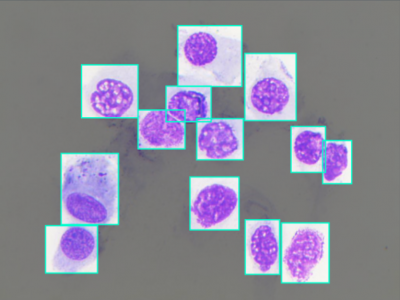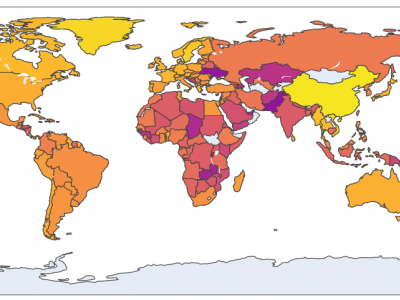health

This is a dataset containing images of cotton leaves with Verticillium wilt, brown spot, aphids, and healthy leaves.The dataset initially consisted of original images of brown spot disease (330 images), verticillium wilt (213 images), healthy leaves (383 images), and aphids (473 images). To balance class distributions and improve model performance, data augmentation techniques such as flipping and scaling were applied.
- Categories:
 234 Views
234 ViewsNasal Cytology, or Rhinology, is the subfield of otolaryngology, focused on the microscope observation of samples of the nasal mucosa, aimed to recognize cells of different types, to spot and diagnose ongoing pathologies. Such methodology can claim good accuracy in diagnosing rhinitis and infections, being very cheap and accessible without any instrument more complex than a microscope, even optical ones.
- Categories:
 861 Views
861 ViewsA craniometry study was undertaken to obtain anthropometric measurements of three hundred and five (305) medical staff within Trinidad & Tobago which is a twin island republic situated in the Caribbean. A non-contact measurement method was used involving 3D scanning equipment to record the geometry of each subject’s head as a digital file. The digital files were then processed using CAD software to obtain measurements for twenty-two (22) facial points of interest. In addition, the gender of each staff member was recorded.
- Categories:
 255 Views
255 ViewsA dataset comprising a total of 21 individuals has been meticulously compiled, with 9 individuals identified as exhibiting Major Depressive Disorder (MDD) based on the outcomes derived from the PHQ-9 Questionnaire. The remaining 12 individuals in the dataset are classified as non-MDD.
The dataset encompasses diverse sensor data, including temperature measurements, SpO2 readings, pulse rates, and accelerometer data. It is important to note that all data points were collected within a controlled environment, ensuring reliability and consistency throughout the dataset.
- Categories:
 2577 Views
2577 ViewsBIMCV-COVID19+ dataset is a large dataset with chest X-ray images CXR (CR, DX) and computed tomography (CT) imaging of COVID-19 patients along with their radiographic findings, pathologies, polymerase chain reaction (PCR), immunoglobulin G (IgG) and immunoglobulin M (IgM) diagnostic antibody tests and radiographic reports from Medical Imaging Databank in Valencian Region Medical Image Bank (BIMCV).
- Categories:
 464 Views
464 ViewsSeveral fields of study can benefit from a large, structured, and accurate dataset of historical figures. Due to a lack of such a dataset, in this paper, we aim to use machine learning and text mining models to collect, predict, and cleanse online data with a focus on age and gender. We developed a five-step method and inferred birth and death years, binary gender, and occupation from community-submitted data to all language versions of the Wikipedia project.
- Categories:
 1211 Views
1211 Views
Mother’s Significant Feature (MSF) Dataset has been designed to provide data to researchers working towards woman and child health betterment. MSF dataset records are collected from the Mumbai metropolitan region in Maharashtra, India. Women were interviewed just after childbirth between February 2018 to March 2021. MSF comprise of 450 records with a total of 130 attributes consisting of mother’s features, father’s features and health outcomes. A detailed dataset is created to understand the mother’s features spread across three phases of her reproductive age i.e.
- Categories:
 2394 Views
2394 ViewsBIMCV-COVID19- dataset is a large dataset with chest X-ray images CXR (CR, DX) and computed tomography (CT) imaging of no COVID-19 patients along with their radiographic findings, pathologies, polymerase chain reaction (PCR), immunoglobulin G (IgG) and immunoglobulin M (IgM) diagnostic antibody tests and radiographic reports from Medical Imaging Databank in Valencian Region Medical Image Bank (BIMCV).
- Categories:
 912 Views
912 ViewsBIMCV-COVID19+ dataset is a large dataset with chest X-ray images CXR (CR, DX) and computed tomography (CT) imaging of COVID-19 patients along with their radiographic findings, pathologies, polymerase chain reaction (PCR), immunoglobulin G (IgG) and immunoglobulin M (IgM) diagnostic antibody tests and radiographic reports from Medical Imaging Databank in Valencian Region Medical Image Bank (BIMCV).
- Categories:
 1686 Views
1686 Views






